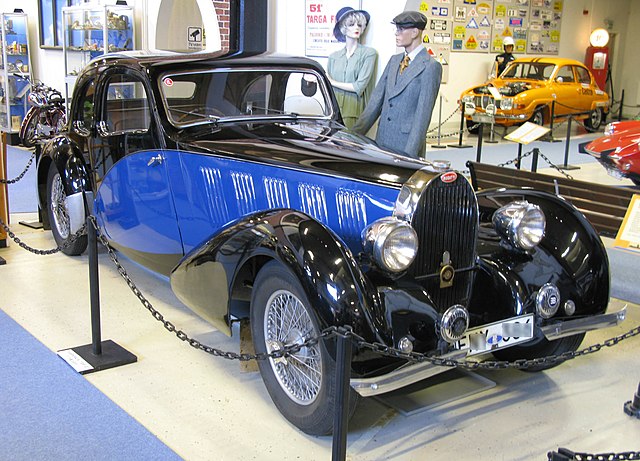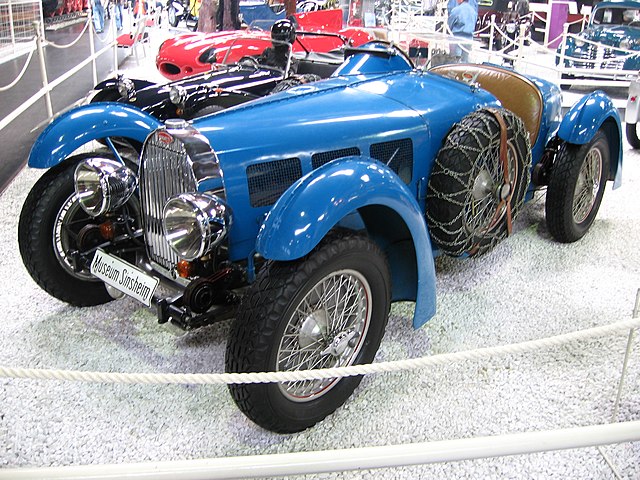
The Bugatti Type 57, a masterpiece of automotive design and engineering, represents one of the most exquisite classic cars ever made by the celebrated French automaker, Bugatti. Produced between 1934 and 1940, the Type 57 was designed by Jean Bugatti, son of the company’s founder, Ettore Bugatti.
This model stands out not only for its technological advancements but also for its stunning aesthetics, which have made it a symbol of luxury and innovation from the pre-war era.
Development and Design

The development of the Bugatti Type 57 began in the early 1930s under the guidance of Jean Bugatti. Jean’s vision was to create a car that combined speed, reliability, and beauty, tailored to the refined tastes of Europe’s elite. The Type 57’s design was a departure from previous Bugatti models, featuring a more streamlined body and an elegant chassis that housed a powerful engine.
Jean Bugatti implemented a twin-cam engine, a significant innovation at the time, which greatly enhanced the performance capabilities of the Type 57. The engine was an 3.3-liter inline-eight, capable of producing approximately 135 horsepower in its naturally aspirated form, which was quite formidable for its time. This setup enabled the car to achieve top speeds that were unheard of for road-going automobiles of the era.
The aesthetics of the Type 57 were equally impressive. Its bodywork was crafted with an artistry that balanced aerodynamic efficiency with sublime beauty. The car featured flowing lines, a long bonnet, and a short tail, which became a signature of Jean Bugatti’s design philosophy. The coachbuilt nature of the car meant that several bespoke versions were produced, making each Type 57 somewhat unique.
Notable Variants

Among the several variants of the Type 57, three stand out for their distinctive features and the stories behind them: the Type 57SC, the Type 57C, and the Type 57 Atlantic.
The Type 57SC (Supercharged) was equipped with a supercharger that boosted its power to nearly 200 horsepower, making it one of the fastest cars on the road during its era. This model is particularly revered for its enhanced performance and scarcity.
The Type 57C (Compressor) included a supercharger as well, but it was introduced in later production versions and featured various mechanical improvements and refinements over the earlier Type 57 models. It was often seen as a more refined, grand-touring version of the Type 57SC.
Perhaps the most famous of all Type 57 variants is the Atlantic. With its avant-garde design featuring riveted fins and an aerodynamic shape, the Atlantic is considered one of the most beautiful and rarest cars in the world. Only four were ever made, adding to their mystique and immense value in the collector car market.
Technological Innovations

The Bugatti Type 57 introduced several technological advancements that were ahead of its time. The independent suspension at the front allowed for improved handling and a smoother ride, a significant improvement over the solid front axles used in many cars of that era. The use of aluminum parts in the engine and body reduced weight, enhancing performance and agility.
The gearbox of the Type 57 was also a marvel of engineering, with four forward gears that were meticulously engineered for smooth shifting and optimal power delivery. This made the Type 57 not just a fast car, but also a pleasure to drive, appealing to sportsmen and aristocrats alike.
Braking was another area where the Type 57 excelled. It featured hydraulic brakes, which were a relatively new technology at the time, providing the car with exceptional stopping power that matched its high-speed capabilities.
Racing Pedigree

Despite being primarily designed as a luxury tourer, the Type 57 also made its mark in racing. The Type 57G Tank, a specialized racing variant, won the prestigious 24 Hours of Le Mans in 1937 and 1939. Its streamlined body and powerful performance showcased the racing pedigree of Bugatti and underlined the Type 57’s capabilities not just as a road car but also as a competitive racer.
The success of the Type 57 in competitions helped cement Bugatti’s reputation as a manufacturer of high-performance cars. It demonstrated the dual character of the Type 57 as both a luxury car and a race-ready machine, a duality that has contributed to its legendary status.
Legacy and Collectibility
Today, the Bugatti Type 57 stands as one of the most sought-after collector cars in the world. Its blend of artistic design, advanced engineering, and racing success has bestowed upon it an enduring appeal. The rarity of models like the Type 57 Atlantic has led to record-breaking auction prices, reflecting the car’s significant cultural and historical importance.
The Type 57’s influence extends beyond just automotive enthusiasts; it is celebrated as a work of art and a technological milestone in the history of the automobile. Its legacy continues to influence modern automotive design and engineering, making the Bugatti Type 57 a true classic that transcends time.
